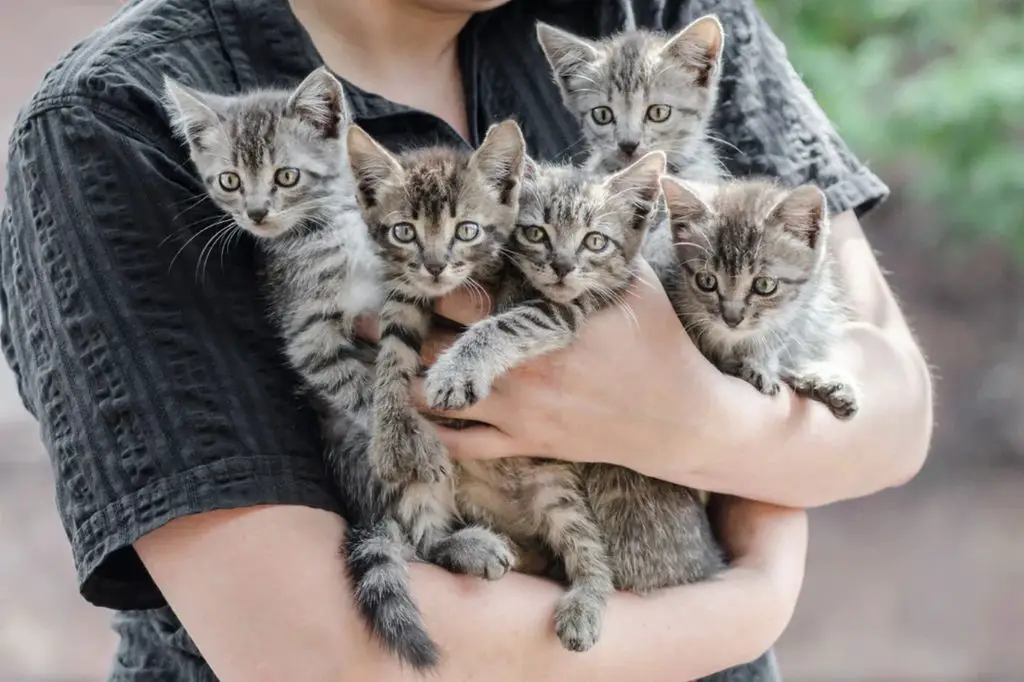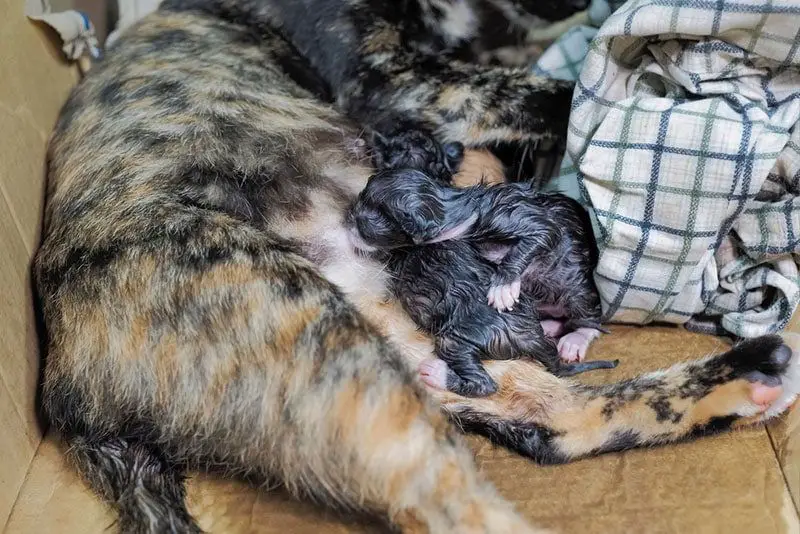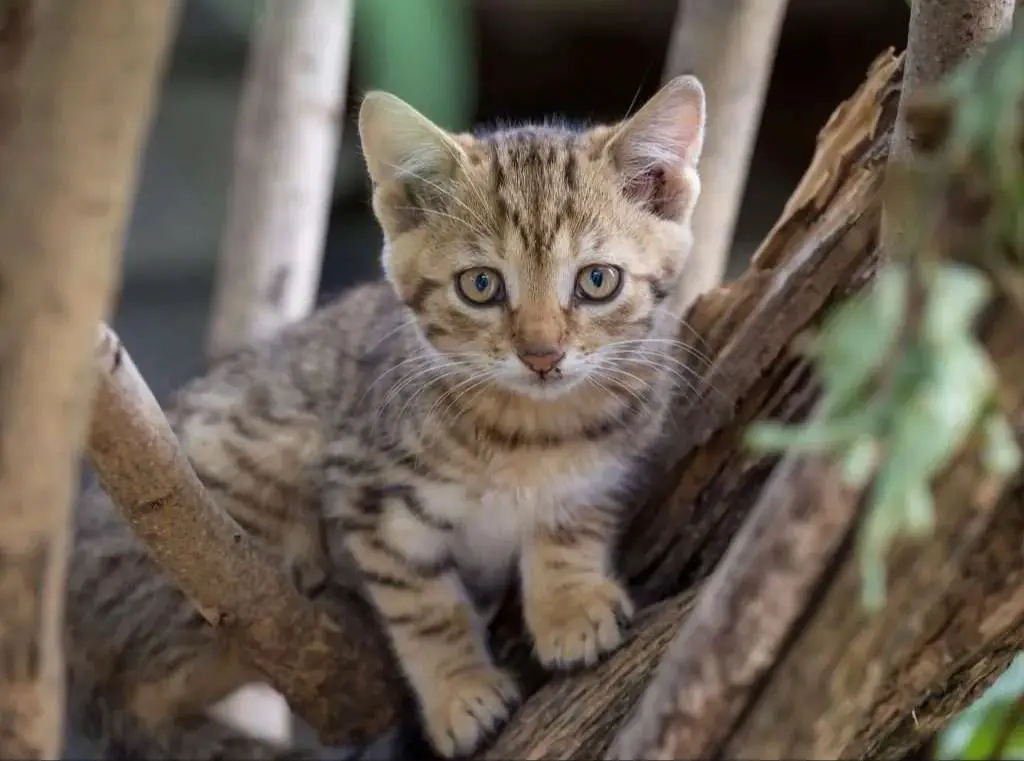A runt is defined as the smallest kitten in a litter, often weighing significantly less than its littermates at birth. Runts tend to have a slower start in life and may require extra care from their mother and humans. There is a common perception that runts stay small compared to normal kittens, but the reality is more complex. The key question is – do cat runts necessarily stay small forever or can they achieve normal size with proper care?
Typical Causes of Runts
There are a few common causes that lead to a kitten being born smaller than its littermates, known as a “runt”:
Litter size – In larger litters, there is more competition for nutrients in the womb. This can result in some kittens receiving inadequate nutrition and being born smaller.
Position in the uterus – A cat’s uterus branches into two “horns.” Kittens at the end of each horn may receive less blood flow and nutrition. These tend to be smaller.
Illness – If a kitten gets sick in the womb, this can stunt its growth. Kittens with congenital defects may also be smaller.
According to one source, “The most common cause of runts is that the litter is just too large for the mother to support” (source). Litter size and position in the uterus play a big role.

Growth Potential
Despite being born smaller, most runts are able to grow to a normal size over time with proper care. According to the La Pantera Bengals site, “Yet, most of the time those preemie babies grow up to be comparable in size and maturity to their peers years later although they had a slow start in life.”
As explained on Quora, “Yes, runts of the litter can often grow to be regular size. While runts are typically smaller and may initially struggle to compete for resources with their larger litter mates, with time, care, and proper nutrition, they usually catch up developmentally.”
An article from The Chieftain notes that “In most cases, if the runt of a litter makes it to six to eight weeks, it will probably survive and likely grow close to full size.” So while runts begin smaller, they can reach normal proportions given adequate time, nutrition, and care.
The key is providing extra attention and care in those critical early weeks and months to help the runt thrive. With a nurturing environment, regular feeding, veterinary oversight, and monitoring of developmental milestones, runts stand an excellent chance of growing to be comparable in size to average kittens.
Importance of Proper Nutrition
Proper nutrition is crucial for helping runt kittens grow and thrive. Because they are smaller and weaker than their littermates, runts need all the extra nutrition they can get. It’s recommended to feed runt kittens a vet-approved high calorie kitten formula as soon as they are weaned, around 4-6 weeks old. Some good options are Royal Canin Mother and Babycat Ultra-Soft Mousse, Hill’s Science Diet Kitten Dry Food, or Iams Proactive Health Kitten Food.

Veterinarians may also recommend supplementing regular kitten food with nutritional gels or pastes. These provide concentrated calories and nutrients that help runts gain weight quickly. Examples include Nutri-Cal, Tomlyn Nutri-Cal, and PetAg Katalyst. Follow dosage instructions carefully and monitor the kitten’s weight daily. Only supplement under a vet’s supervision.
Some cat owners have success mixing kitten formula or human baby foods into the runt’s regular meals. However this should also be approved by a veterinarian, as improper supplements can cause diarrhea or other issues. Overall, providing vet-recommended high calorie food and supplements gives runt kittens their best chance at proper growth and development.
Providing Extra Care
Runts often require some extra care and attention in order to thrive. As the smallest kitten in the litter, they may have trouble competing with their larger siblings for food and warmth from the mother cat. It’s important to monitor the runt’s weight gain and nutrition closely in the early weeks to ensure they are getting adequate nourishment. According to veterinarian Dr. Ochoa, “It is best to weigh them every day. Many do not gain weight as they should. If they don’t gain weight, it’s an emergency” (https://cat-world.com/runt-of-a-cat-litter/).
If the runt is struggling to nurse, try assisting them by placing them directly onto a teat. You can also supplement with bottle feeding if needed. Feedings may need to be more frequent than their siblings. Providing adequate nutrition is critical for the runt to gain weight and grow properly.

It’s also important to give the runt plenty of affection and attention. Since they tend to be more timid, extra socialization and handling is beneficial. Gently hold, pet and play with the runt daily so they become comfortable around people. Proper socialization will help ensure they develop into a friendly, well-adjusted cat.
Health Considerations
Kitten runts often have more health problems than their litter mates. This is because they receive less nutrition in the womb, making them more vulnerable to issues like intestinal problems, breathing difficulties, heart defects, and inability to thrive. Runts may also have underdeveloped immune systems, making them more prone to viruses, infections, and parasites.
Some common health issues seen in runts include fleas, intestinal worms, ear mites, diarrhea, and anemia. Lack of nourishment in the womb can also lead to organ malformations, deafness, blindness, and neurological problems. Since runts start out smaller, they continue needing extra care like bottle feeding, supplementation, and monitoring of weight gain. With attentive nursing and vet care, many runts can overcome early obstacles and live long healthy lives. However, responsible breeders and adopters should be prepared for the increased possibility of medical issues.
Spaying/Neutering
It is recommended to spay or neuter runt kittens by 4-6 months of age to prevent accidental breeding. Spaying/neutering not only prevents litters, but can also reduce the risk of certain cancers and diseases later in life. According to veterinary experts on Quora and Reddit, there should typically be no issues with spaying or neutering a runt kitten as long as the vet deems them healthy enough for surgery. While all surgeries carry some risks, spaying or neutering at a young age is generally very safe and routine. Owners should follow their vet’s guidance on the ideal timing for the procedure. With proper veterinary care, spaying or neutering should not pose any increased risk to a runt kitten’s health and can provide long-term benefits.
Lifespan
While runts may face more health challenges early in life, with proper care and nutrition they are capable of living a normal lifespan. According to [1], indoor cats have an average lifespan of 14 years and can live up to 20 years. As long as the runt receives adequate nutrition, vet care, socialization, and a loving home, there is no reason it cannot achieve a typical lifespan for a housecat.
Some sources suggest runts may be slightly more prone to illness, congenital defects, or complications as kittens. However, runts that survive to 6-8 weeks are likely to continue maturing. With attentive care and spay/neuter to prevent pregnancy complications, the cat can grow close to full size and avoid chronic health issues. While their start in life may be more difficult, runts can live just as long with dedicated owners.
The key is ensuring the runt receives enough nutrition, adequate exercise/playtime, regular vet checkups, preventative care, and is kept safely indoors. With a commitment to proper husbandry and early intervention for any health concerns, owners can enable a runt kitten to grow into a healthy, long-lived cat.
Adoption Tips
When adopting a runt kitten, there are a few important things to keep in mind:
Give them time to adjust – Runts tend to be more timid, so go slow with introductions and allow them to get comfortable in their new environment at their own pace. Be patient and encourage socialization through play and treats.
Monitor their health – Make sure to keep vet appointments to track their growth and development. Since runts can be more susceptible to health issues, monitor their eating, energy levels, and litter box habits.

Ensure proper nutrition – Feed a high-quality kitten food and monitor intake. Runts may need more frequent feedings to help support growth. Discuss supplements with your vet if needed.
Consider potential lifelong small size – While many runts catch up in size, some remain smaller than average throughout life. Be prepared for either outcome.
Give them extra care – Runts often benefit from extra attention and affection. Make them feel secure by holding, petting, and playing gently.
Runts can make wonderful pets with proper care. Their underdog personality makes them extra lovable. With preparation and information, adopting a runt can be extremely rewarding.
Summary
In summary, runts are cats that are significantly smaller than the rest of the litter. They face more health challenges at birth and often require extra care to reach a healthy weight. However, with proper nutrition, vet visits, and a loving home, runts can thrive and live full, happy lives. There are many success stories of runts growing into healthy, energetic cats. While they may stay on the smaller side, runts have big personalities. With dedicated care, especially in their early weeks and months, runts can overcome the odds and limitations of their small size. Recap that with dedication, runts can thrive and live full lives.

